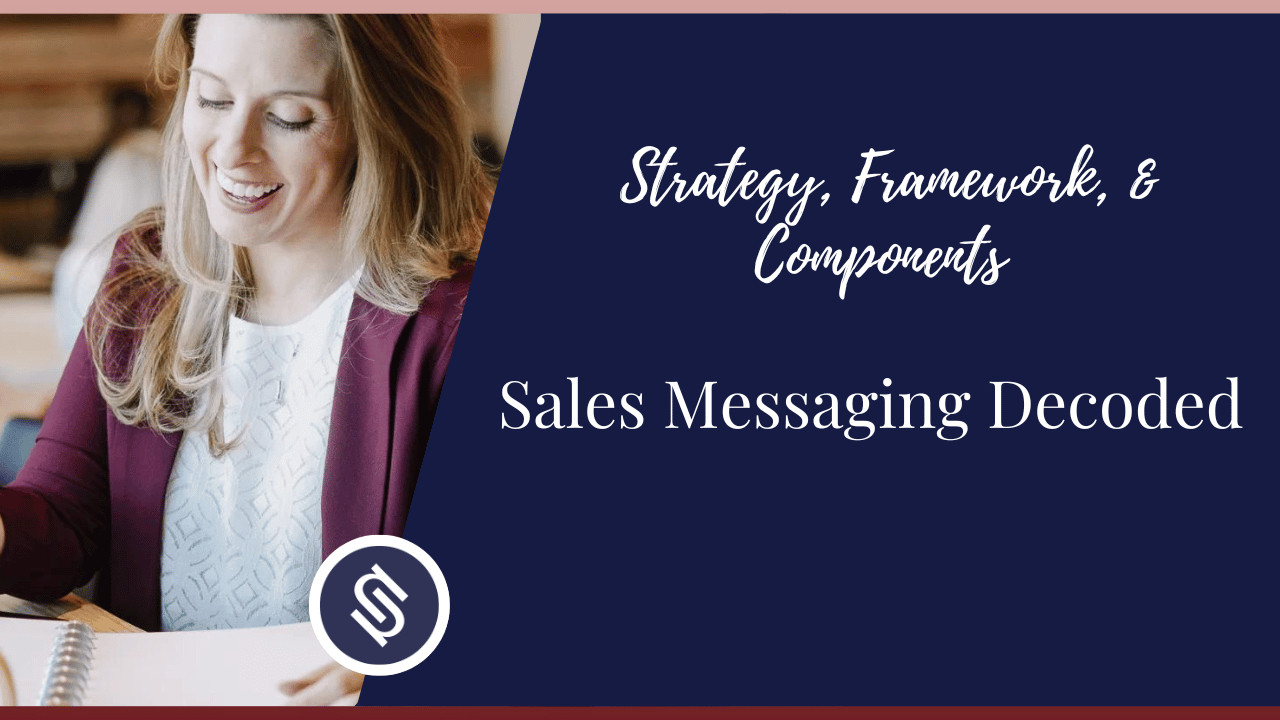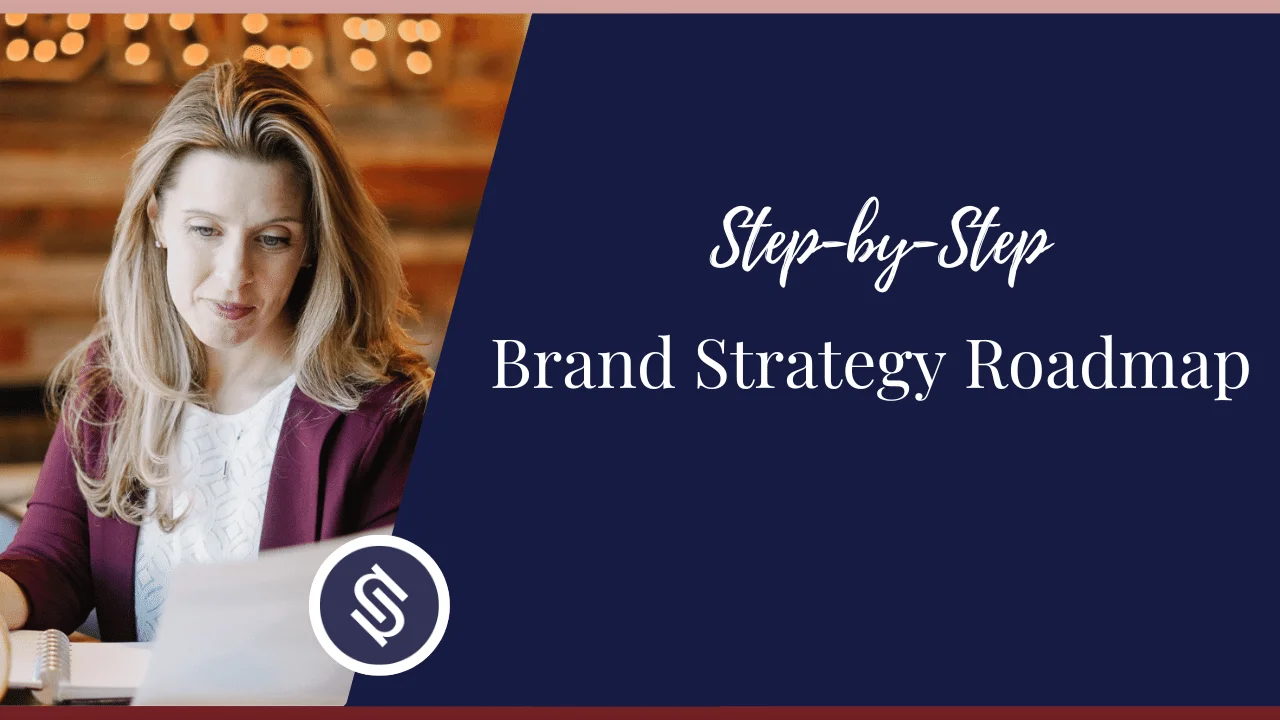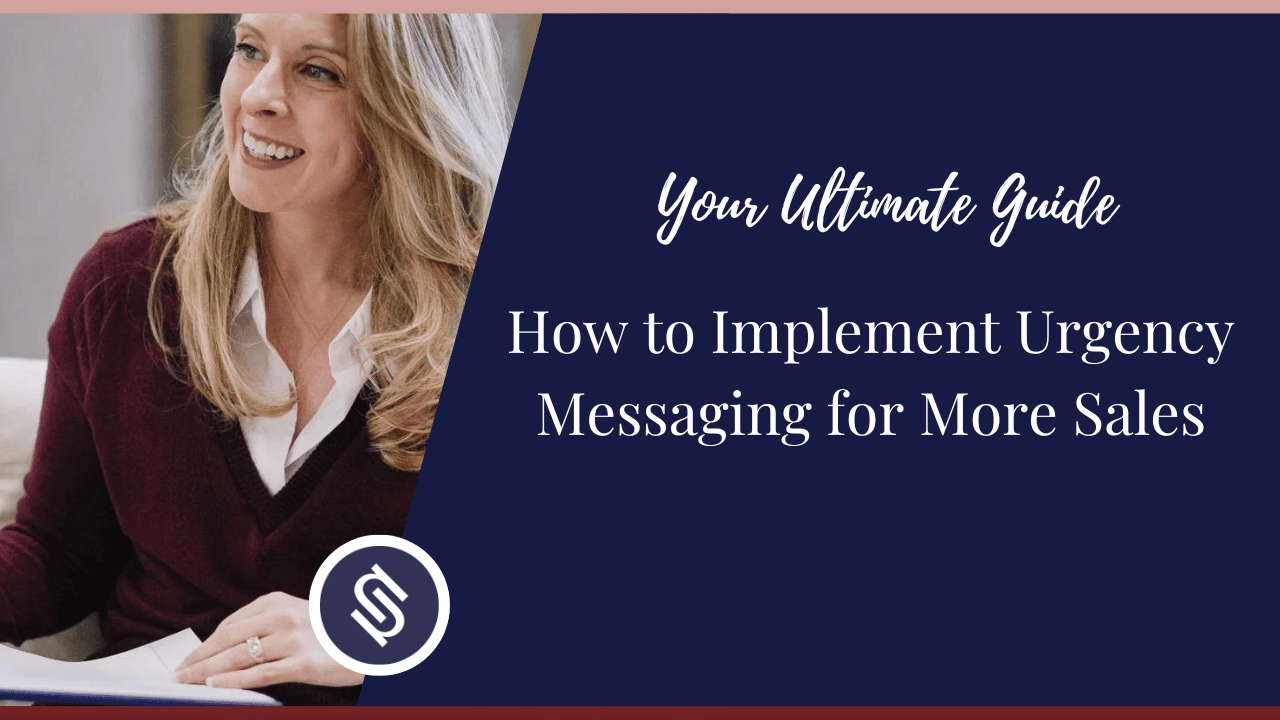As a brand messaging strategist, one of the things I mull over quite often is how to make a brand stick.
Research shows that 95% of purchasing decisions are influenced by our subconscious mind, not logical thinking.
So, if it’s more than catchy phrasing or clever wordsmithing, how do you create a brand that your audience remembers–and wants to engage with?
Here’s where key messaging comes in.
Let’s talk about it.
Tip: Not seeing results with your marketing strategy? Start a FiniSprint with me, Nora Sudduth, today for one-on-one, results-focused support that takes your strategy from start to finish.

What is Key Messaging in Marketing?
Key messaging is the main idea that encapsulates what you are about as a brand. It’s a short and clear statement of what you offer, why you offer it, and why it matters.
It guides all communications with your customers–from online conversations to face-to-face interactions–and sets your brand messaging in motion.
The Key Message Formula
It takes lots of brainstorming and the time to be creative to develop a strong key message. So don’t be surprised if yours needs several iterations to perfect.
If you’re struggling with a blank page, this formula should help get things going:
Key Message = [Value] by [How] with [Capabilities]
Let’s break this formula down:
- Value: A concise statement of your brand value that tells what your company or product does.
- How: The means by which you deliver your value to your customers.
- Capabilities: Your brand’s or product’s core competencies that solve your customers’ main pain points.
Key Messaging Examples
These real-world examples will help you better understand how to craft key messages using the formula above.
1. Airtable
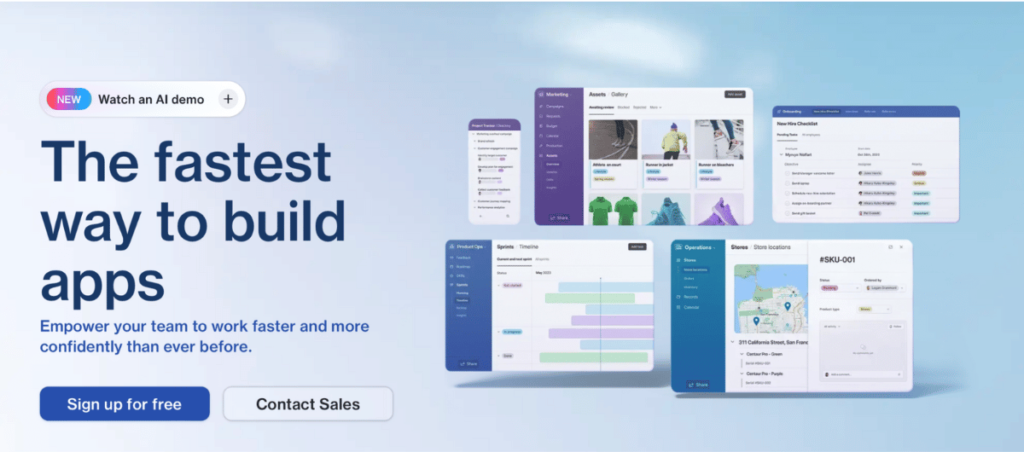
Airtable is a cloud-based platform that makes remote collaboration easier.
This above-the-fold key message communicates a strong value proposition: they are the “fastest way to build apps.”
It also addresses an implied pain point: collaborating remotely means slow-moving processes.
However, we haven’t gotten the full picture here yet. We’re missing its core capabilities and the means by which Airtable delivers value.
But they address that with below-the-fold copy:
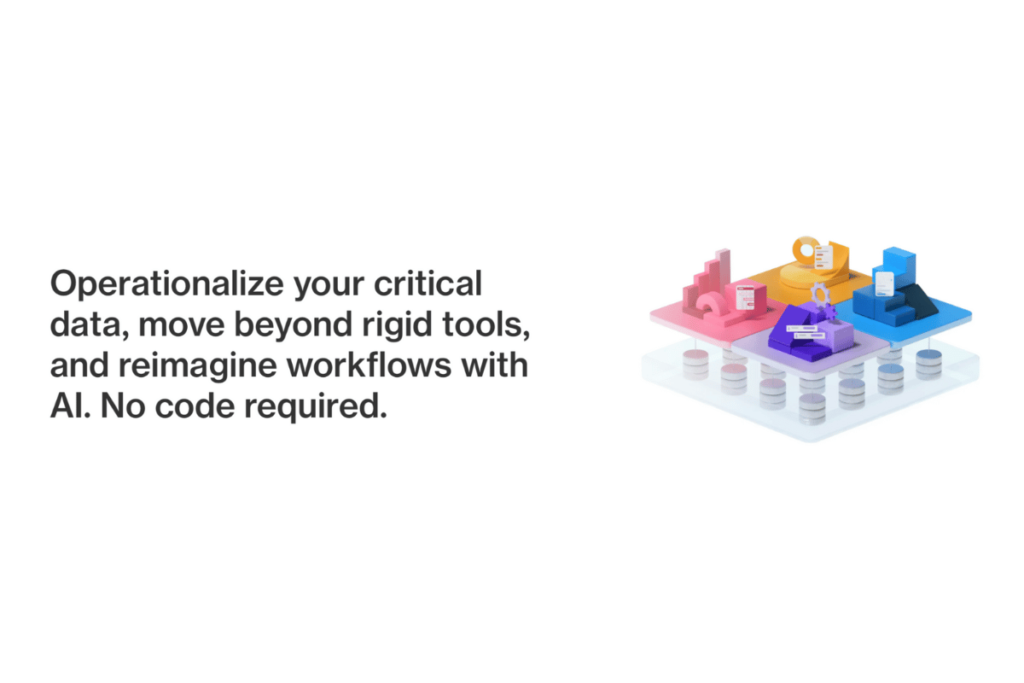
As we scroll down the website’s home page, we understand:
- How: AI (A bit too vague still and begs the questions, “What type of AI?” and “How does it work?”. If you’re familiar with Airtable being a cloud collaboration platform, you’ll get it. But if you’re not, you might still be unclear about what it does.)
- Capabilities: Operationalize your critical data, move beyond rigid tools, and reimagine workflows.
2. Slack
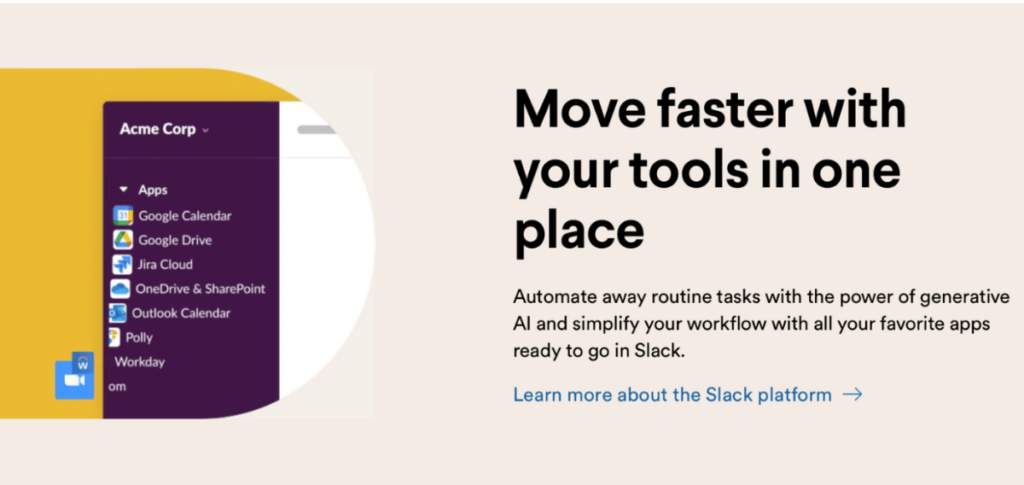
Slack is another productivity tool that makes remote collaboration easier by housing all the apps you need.
See how they put together a key message that drives home exactly what they do and why it matters:
This is a good example of a critical message that’s clear, concise, and complete.
In just a couple of sentences, we get the following details:
- Value: Helps you move faster with your tools in one place
- How: Automate away routine tasks and simplify your workflows
- Capabilities: Generative AI, all your tools ready to go in Slack
To drive their point even better, next to their essential message is a video showing us Slack in action.
6 Qualities of a Strong Key Message
Have you created key messages for your brand? Good!
Now, let’s look at whether they’re impacting your goals. I mean, are your sign-ups increasing? Are you getting more leads? Are people enticed to try that free trial?
But you don’t have to wait to see the numbers to tell whether your key messages are any good.
Here are 6 qualities of a strong key message:
1. Clear and Concise
A compelling key message is concise and crisp. It’s catchy enough to be memorable and informative without being too wordy.
Assume that your audience doesn’t have the time to scan a large block of text, and ensure your copy gets straight to the point.
2. Focused on Brand Value
You wouldn’t want to bombard potential customers with lengthy product specs, amazing though they may be.
They want to know what you bring to the table in the shortest, clearest way possible.
Allow that to shine through in your copy to create an emotional connection with your audience.
3. Invites People to Learn More
Key messages act as a hook that captures your audience’s attention, sparks interest, and entices them to learn more about your brand.
It can be challenging to say what your brand is about in just a few words, especially when you offer highly technical services, such as with a genome-editing company.
That’s why working with a marketing expert can be a huge advantage. A pro can distill compelling key messages out of murky brand descriptions.
Book a discovery call with me, and see how a pro can make all the difference. I’ve worked with numerous brands that have sold over $500M worth of products and services. The same can happen for you!

4. Relatable
A strong key message is spoken in your audience’s language. You don’t want to insert any jargon that could confuse your audience or make them feel left out.
Also, buzzwords like “synergy” or “wellbeing” may sound appealing but don’t convey clear meaning. They can also be too vague to say what you mean impactfully.
Instead, maximize your copy by using words that clearly state how you benefit your customers.
5. Reflects Your Brand Personality
Your key message is one of your first touchpoints with your audience.
So, you’d want your message to tell your audience whether you’re fun, serious, witty, or athletic.
This will allow you to create an emotional connection and help your audience remember your brand.
6. Motivates Action
You want your messaging to stick, not just for the sake of being memorable. If it’s not causing people to act, it’s not quite there yet.
A good key message inspires people to take a desired action, whether by clicking on a “Sign Up Now” button or reading more about your products.
Remember that your brand messaging is part of one whole marketing strategy that impacts your bottom line.

What is a Key Messaging Framework?
A key messaging framework, or messaging architecture, is a strategy that outlines the way you communicate your brand to your target audience.
Think of a map that directs what your messaging focuses on and illustrates the path you need to take to achieve your goals.
Your messaging framework needs the following components:
- Audience/buyer personas: Good communication begins with a thorough understanding of your audience. Establishing buyer personas will help you specify your messaging so that it resonates with each audience segment.
- Unique value proposition: Your UVP differentiates your brand from your competition and will impact how you frame your messaging. A good key message highlights your brand’s value.
- Proof points: These are evidence that your brand or product works. They lend credibility to your message and entice people to engage with you.
- Tone and style: These dictate how you put your message together. Your tone and style allow your brand personality to shine through.
Something might be amiss in your messaging framework if you’re not generating enough leads or your leads aren’t converting.
Evaluate your marketing campaign with ConversionRX to improve your market positioning, strengthen your offer, and close more sales.

How to Develop a Key Messaging Strategy
Before putting pen to paper, remember that creating powerful key messages is a time-intensive creative process. So don’t rush it!
This is also the best time to work with a marketing expert like me who can blend experience, intuition, and strategy to architect messaging that drives results.
When it’s time to get to work, here are a few things to keep in mind when creating a key messaging strategy:
1. Learn What Your Audience Cares About
When researching your target audience, dig deep to find out what they care about.
Ask questions like:
- How do they spend their time?
- What values do they uphold?
- What do they spend their money on?
2. Clarify the Pain Points You Address
Once you’ve gained a deeper understanding of your audience, the next step is determining how you improve their lives.
What pain points do you address? How do you provide solutions to problems they face?
Are your offerings new to them or in the industry? If not, how do you differ from those who offer similar solutions?
3. Segment Your Audience
There are two main types of key messages:
- Core message: An overarching idea that encapsulates what you do as a business. Stays consistent throughout your marketing strategy.
- Audience-based messages: Messages shaped according to the specific needs, interests, and goals of each buyer persona or audience segment.
Create buyer personas representing each audience segment, and repurpose your messaging to ensure it resonates strongly with each one.
4. Get to Know the Competition
Research your competition to understand what sets you apart, what you do better, and ensure your message stands out.
It’s helpful to know what your competitors are saying, not to conform to their message, but to make sure that you highlight an edge over them.
5. Cut the Fluff
It can be tempting to stuff your key messages with all the things you want to say.
For instance, a product’s key features may be wonderful to know, but now is not the time to fit all the nitty-gritty of your products into your key messages.
The goal is to hook your audience and get them curious about your brand. That can’t be done by overlong messages that could intimidate casual onlookers.
Once you’ve piqued their interest, you can go into detail about what you offer and how it works.

How to Implement Key Messages in PR and Communications
Your message is only as impactful as when it’s told.
PR and communications play a major role in getting the word out and ensuring that audience perception of your brand aligns with your desired narrative.
And all that takes finesse.
Let me show you how to use your key messaging in all your communications.
- Spread the word: First, distribute to as many channels as possible! But remember to choose your channels wisely. Pick the ones that align with your messaging.
- Ensure communications are consistent: Provide a messaging matrix to guide internal teams and ensure everyone understands and can communicate your message accurately.
Your messaging should influence all customer touchpoints.
- Test your message: Your audience evolves, and your message must adapt to stay relevant and fresh.
One way to ensure that is to review and test your message regularly.

Frequently Asked Questions (FAQs)
Learn more about key messaging with these commonly asked questions:
How Can Key Messaging Influence Your Marketing Strategy?
Your key messaging shapes your brand identity and communicates your brand value to your target audience.
It impacts your channels to connect with potential and existing customers, the marketing materials you develop, and how you communicate your value proposition.
What is the Role of Key Messaging in Crisis Communication?
When handling a crisis, it’s crucial to communicate a cohesive narrative to avoid confusion.
Developing key messages ensures that messages are consistent across all channels.
Why Consistency in Key Messaging Matters for Brand Identity?
Key messaging must be consistent to make your brand memorable and easily recognizable for your audience. It also ensures that your marketing strategies have a clear direction.
How Can You Update Your Key Messaging Without Losing Brand Recognition?
You can maintain a solid brand identity by sticking to your core message (what your business is all about/what you do and why) and staying true to the values that are unique to you.
Conclusion
Key messages are vital to a recognizable, memorable, and impactful brand identity.
In this guide, we learn that a good brand message is clear and concise, value-focused, ignites curiosity, is relatable, and motivates action.
They are also the result of a careful creative process that requires inputs from various stakeholders and the knowledge and experience of a marketing expert.
Join me for a discovery call, and let me use my expertise to help you craft key messaging that converts!



![Featured Image - What is Key Messaging in Marketing [Ultimate Guide]](https://norasudduth.com/wp-content/uploads/2024/05/What-is-Key-Messaging-in-Marketing-Ultimate-Guide.png)
